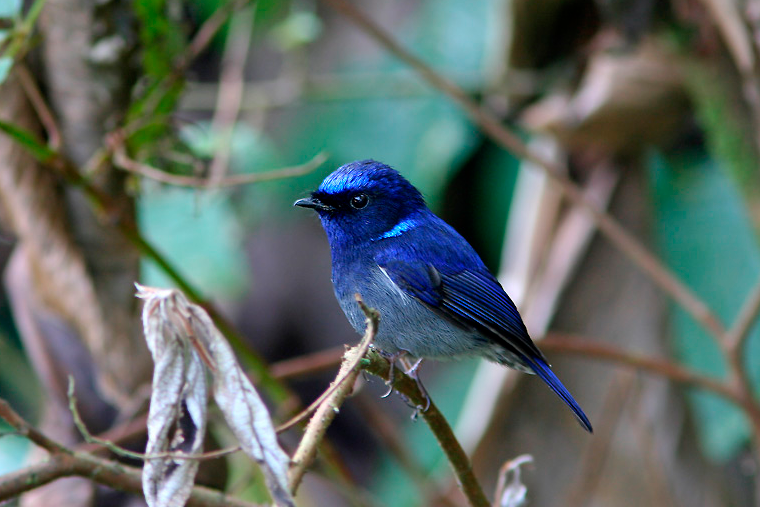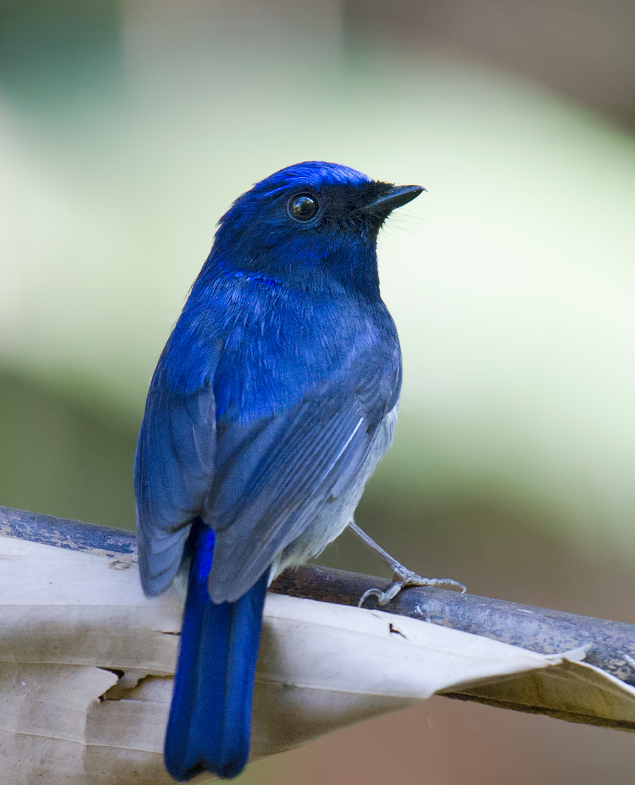Small Niltava (Niltava macgrigoriae). This beautiful blue songbird in the flycatcher family is native to the Indian subcontinent and Southeast Asia
The Small Niltava, scientifically known as Niltava macgrigoriae, is a stunning blue songbird belonging to the flycatcher family. Native to the Indian subcontinent and Southeast Asia, this small bird is known for its enchanting beauty and melodious songs.
With its vibrant blue plumage, the Small Niltava catches the eye of bird enthusiasts and nature lovers alike. The male bird displays a striking deep blue color on its upperparts, while its underparts transition to a pale blue shade. It also features a black face mask that contrasts elegantly with its blue feathers. The female, on the other hand, exhibits a more subdued grayish-blue plumage, which adds a touch of subtlety to its appearance.
These birds inhabit various forested habitats, including evergreen, mixed deciduous, and bamboo forests. They are commonly found at elevations ranging from the foothills to montane regions. Their preferred territories often consist of dense vegetation, where they can easily find insects and other small invertebrates, their primary food source.
Apart from their stunning appearance, Small Niltavas are known for their melodious songs. The male birds have a distinctive and pleasant voice, producing a series of clear, flute-like notes that reverberate through the forest. Their songs serve both as territorial calls and to attract mates during the breeding season.
During courtship, the male performs an elaborate display to impress the female. This includes spreading its wings, puffing up its chest, and hopping from branch to branch while singing its enchanting song. Once a pair forms, they engage in nest-building activities together. The nest is usually a cup-shaped structure made of moss, leaves, and other plant materials, carefully hidden amidst dense foliage.
The Small Niltava is a migratory bird, making seasonal journeys to different regions within its range. They breed during the spring and summer months, building nests and raising their young. As the cooler months approach, they embark on their migration to warmer areas, where they can find abundant food sources.
However, despite their enchanting presence and musical talents, the Small Niltava faces various challenges in its natural habitats. Deforestation, habitat loss, and fragmentation pose significant threats to their populations. Climate change and other human activities further exacerbate these issues, making conservation efforts crucial for their survival.
Birdwatchers and conservationists appreciate the Small Niltava for its beauty, song, and ecological significance. By raising awareness about the importance of preserving their habitats and implementing conservation measures, we can ensure that future generations can continue to admire and enjoy the presence of these magnificent birds in the Indian subcontinent and Southeast Asia.
Hits: 0









